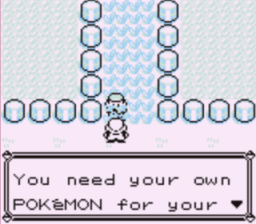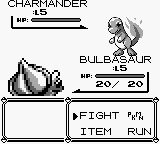Game Changers: Volume 11 – Pokemon Red and Blue
When Pokémon Red and Blue first came over to the States in September of 1998, the popularity explosion came as quite a shock to those unfamiliar with the series. They cried, “What was this game, and why does it keep our children up nights?” Mario never did that — well, not on this scale, anyway.
 |
| Don’t go into the long grass! |
To understand what made Pokémon Red and Blue such a success, you need to understand the game’s basic mechanics. At the start of the game, the player is cast as an aspiring Pokémon trainer, given his very first critter, and sent off into the world to make his fortune. The player will capture and train various wild critters found along the way to challenge Gyms and Gym Leaders; once all eight Gym Leaders are out of the way, it’s on to the Pokémon League, to challenge the Elite Four and take your place as Champion, the greatest Pokémon trainer in the land.
But before you can claim your position on the top of the heap, you’ll need a party, and to make a party worthy of the Champion, you’ll need to think about the elemental Type of your Pokémon, the moveset of each critter, and their basic stats. Pokémon Red and Blue were perhaps the most unbalanced of the series, offering a dangerously dominant roster of Psychic types, but even then, the basic ideas of team building and elemental strategy led to a shocking variety in strategy.
Though the Pokémon series has gone through god only knows how many spin-offs, remakes, and upgrades, the central Pokémon games have always evolved very slowly. At its core, Pokémon Platinum uses the same basic idea as Pokémon Red and Blue did; players capture critters, travel the world, and do battle with other trainers. In some franchises, this kind of fierce loyalty to a single concept could be a problem, but for Pokémon, this consistency helps to maintain the enduring appeal.
What really made Pokémon Red and Blue unique was the combination of trading and battling between players. Travelling the in-game world and defeating in-game trainers is all fine and good, but they’re not at all what made the series such a smash hit. But the chance to compete against your friends? To have something to brag about to them, and challenge them to top you? That taps into something fundamental about all gamers, particularly the more youthful amongst us: the competitive spirit.
 |
| Lizard punching at its finest. |
Pokémon Red and Blue‘s understanding of what young gamers want, combined with solid game mechanics, are what caused a fundamental shift in the way RPGs are presented in the youth market. Seeing the popularity of a game that encourages both cooperation and competition through trading and battling caused a huge flood of Me Too titles, some good, most not so good. What makes Pokémon stand out against the sea of imitators is its constant willingness to refine itself, to improve game mechanics, to give players more and better options in the construction of teams. In the end, its this constant evolution, built up out of generations of tiny changes, that makes Pokémon an evergreen in the RPG world.
Pokemon really is a game for any age to enjoy but if you’re a parent and don’t want to play the same game as your kids, try playing mobile casino Canada at www.EasyMobileCasino.com.







Leave a comment
You must be logged in to post a comment.